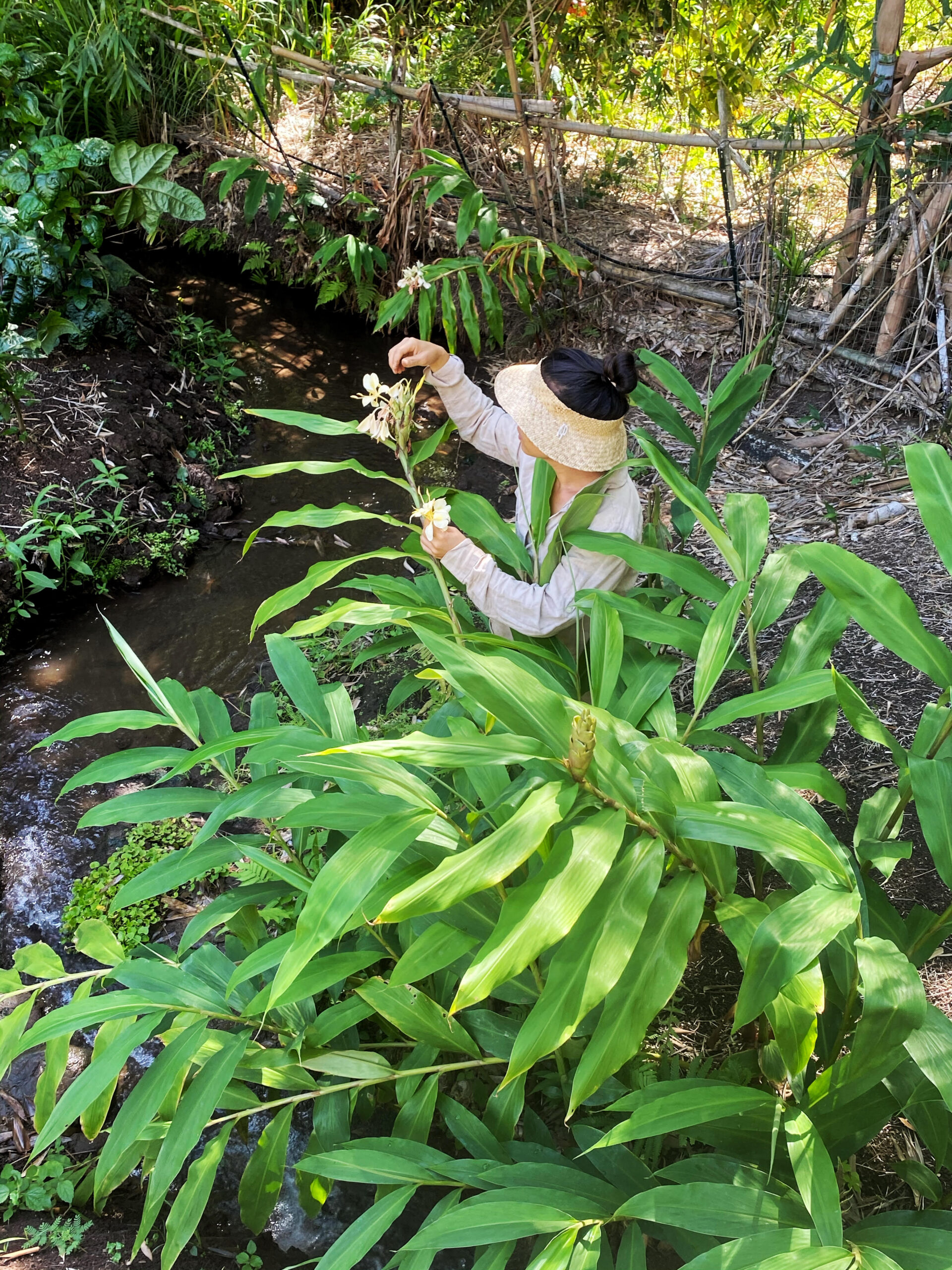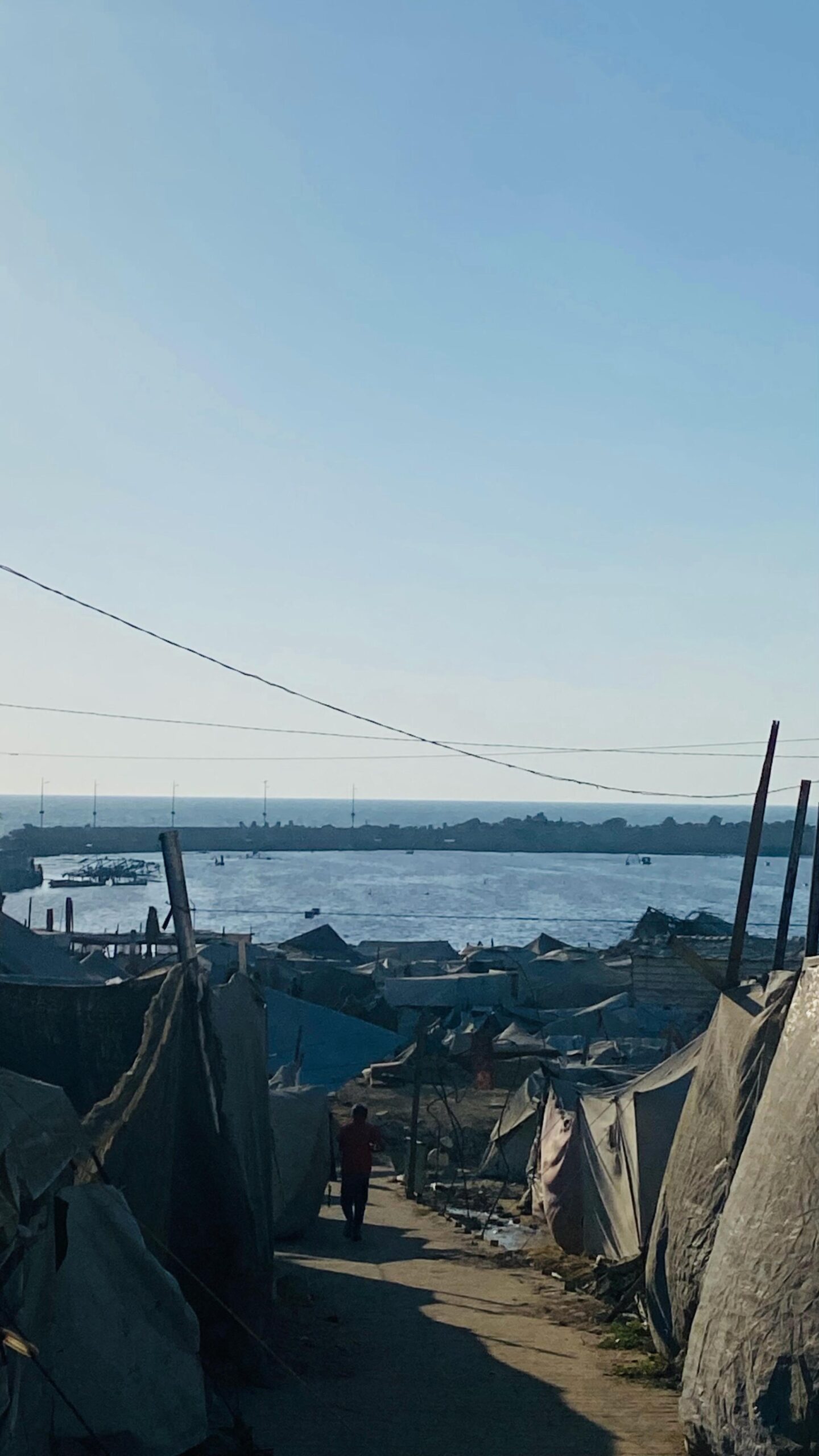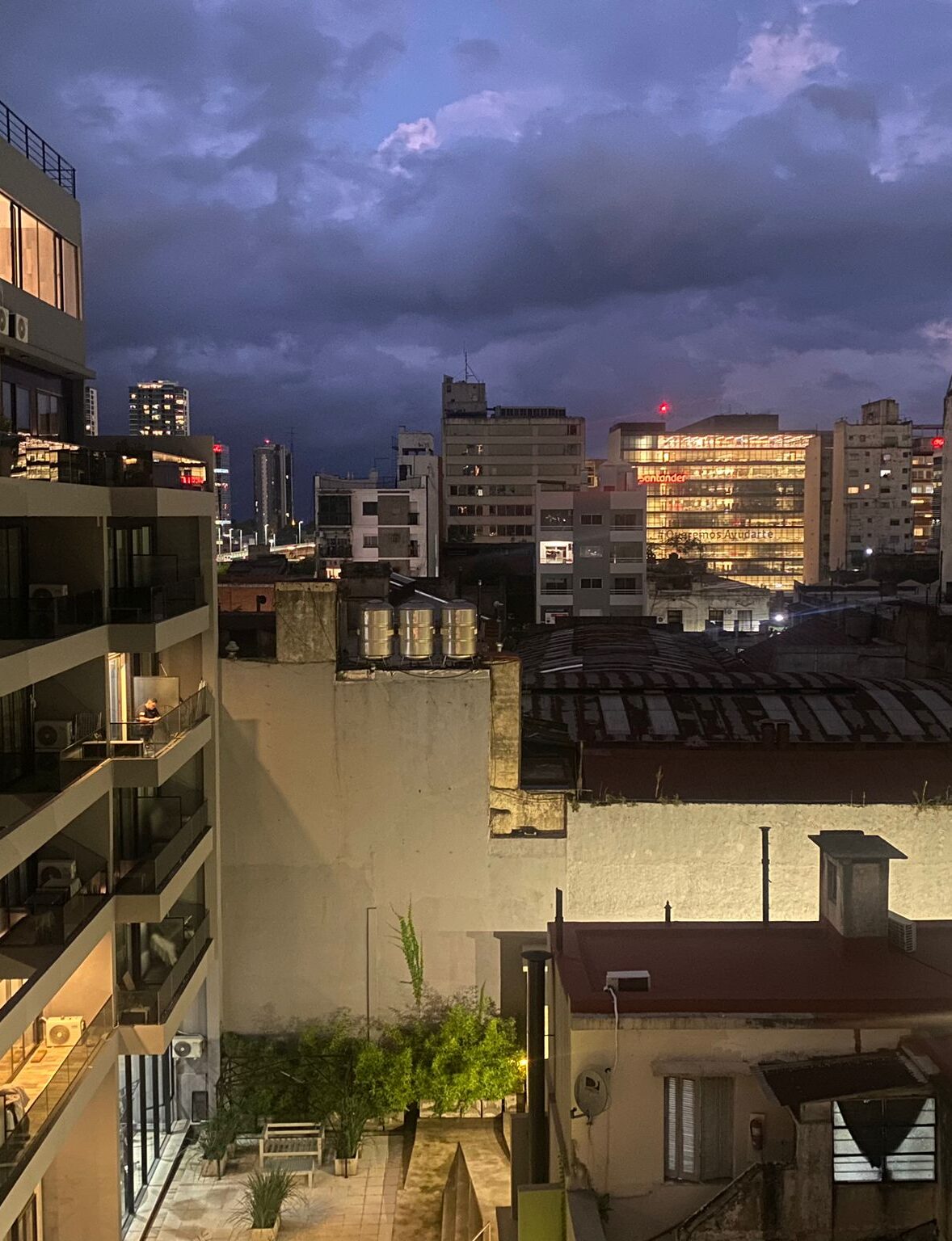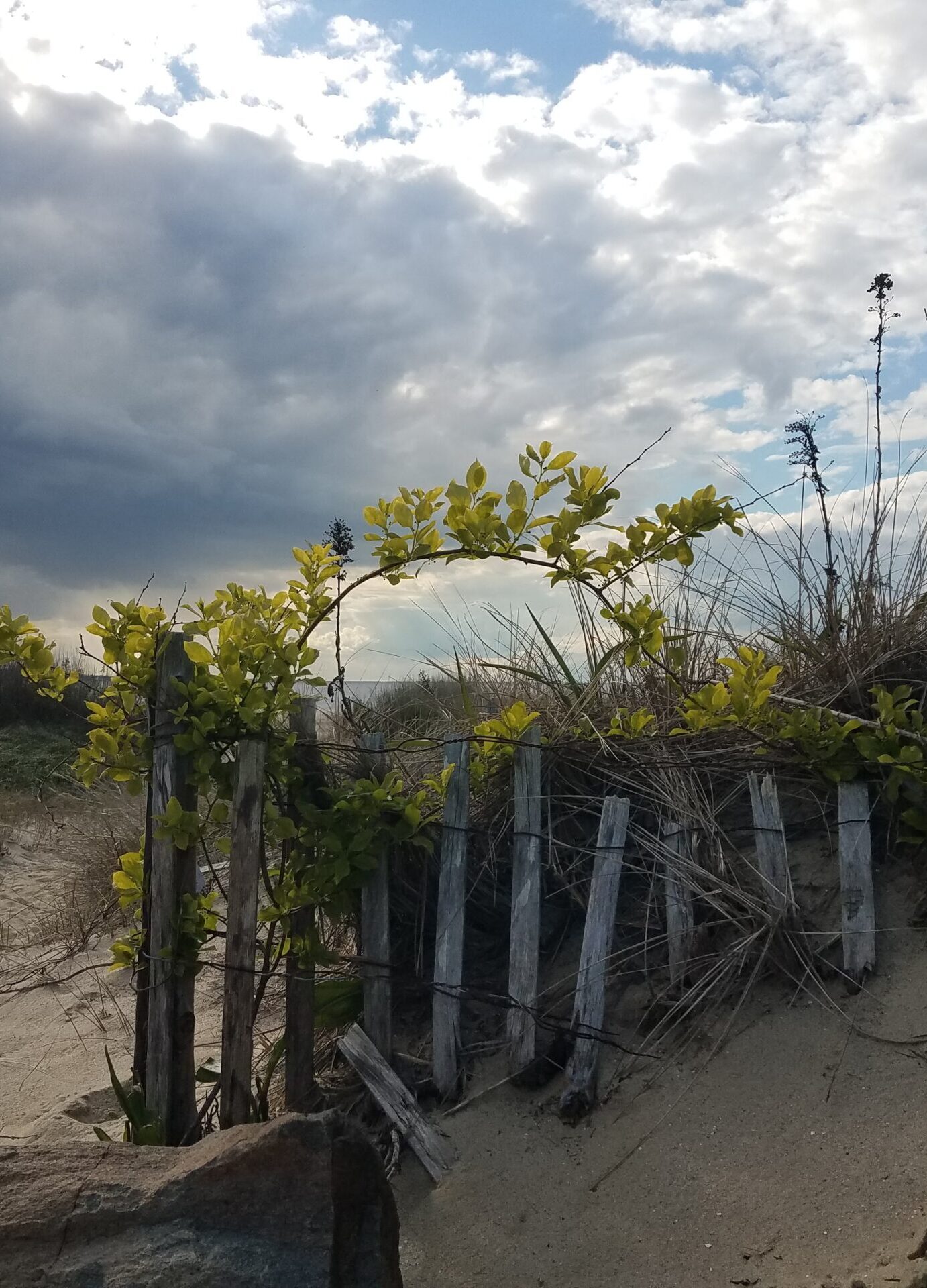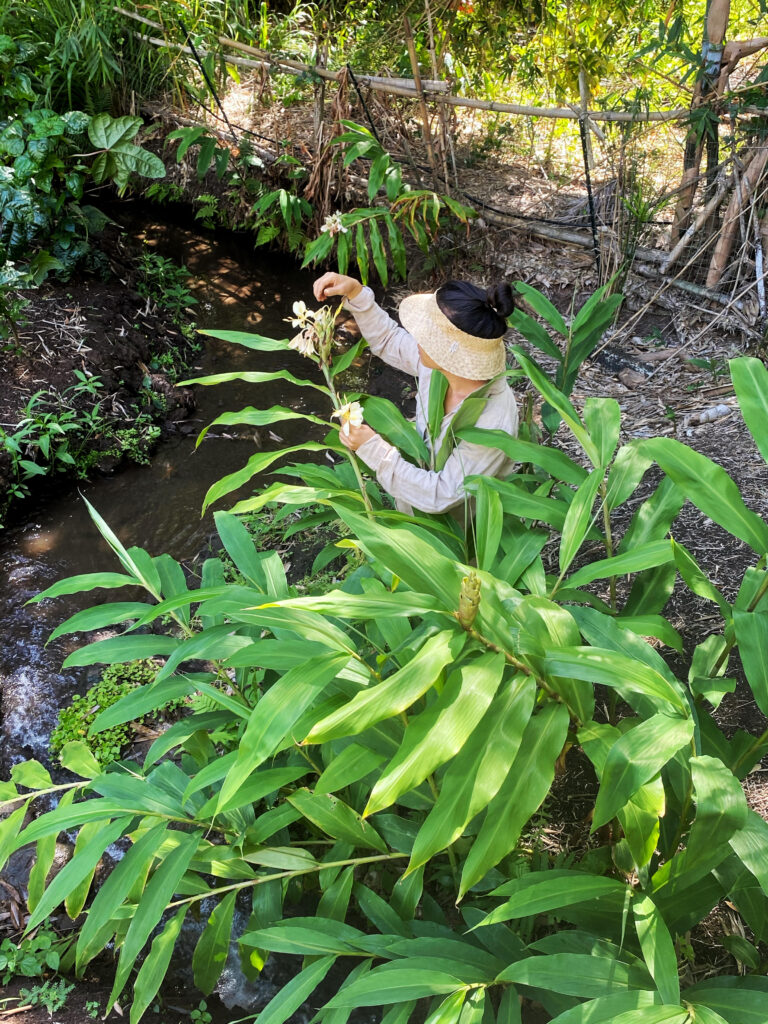
Kamuela, Island of Hawaiʻi
On the side of the road near our home on the hill in Waimea, a cluster of perfumed yellow ginger, Hedychium flavescens, also known as cream garland-lily or ʻawapuhi melemele.
I know what this is like, the many names one can be called.
- • •
We always want to be something we’re not. So many times, I wished I was white. I would look in the mirror at my Chinese face staring back at me, willing myself to be different.
- • •
In Hawaiʻi yellow ginger is a perennial herb, found everywhere but considered non-native to this place. What we know: it was introduced and naturalized, but no one has claimed responsibility for bringing it over. Maybe it had been a gift, or perhaps it arrived with the first Chinese who came in the late 1780’s. A friend tells me wealthy colonialists tended to ferry exotic florae around the world in order to plant them in their gardens. Yellow ginger’s home is in the Himalayas, and also southwest China, Sichuan province, though I don’t remember seeing it when I was there. Funny what you miss when you’re not looking.
- • •
My children wish they had Hawaiian blood. Being born and raised here isn’t enough—they have no claim to this place they call home. It’s hard when you don’t know where you belong.
- • •
Yellow ginger grows wild in the Islands. The oval flower head, or “spike,” has overlapping green bracts in multiple spiral rows, with creamy white petals and sunny yellow stamens. At its fullest height, yellow ginger can tower over eight feet. I would pass them daily as I drove to and from our house, taking their beauty for granted, accepting their presence in this place. You can’t eat yellow ginger—it’s ornamental, used as a fragrant hair decoration, or strung and woven into leis.
- • •
Growing up, I felt pitted against other Asian-Americans, all of us proving our worthiness. In China, I wasn’t Chinese enough. In Hawaiʻi, I got to unlearn all of that. I hope my kids will, too.
- • •
It’s easy to confuse yellow ginger with other kinds of ginger. Shampoo ginger, edible ginger, white ginger, kāhili ginger. To the untrained eye, it’s possible to see how they all look alike, to assume they are the same, so similar that distinction may not seem necessary.
It is.
Darien Hsu Gee is the author of five novels published by Penguin Random House that have been translated into eleven languages. She won the 2019 Poetry Society of America’s Chapbook Fellowship award for Other Small Histories and the 2015 Hawai‘i Book Publishers’ Ka Palapala Poʻokela Award of Excellence for Writing the Hawai‘i Memoir. She is the recipient of a Sustainable Arts Foundation grant and a Vermont Studio Center fellowship.
Photo courtesy of Lehia Apana of Polipoli Farms.
